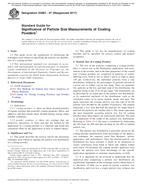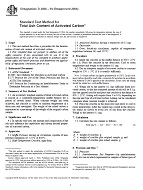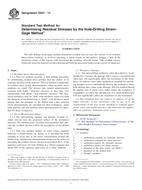1.1 This fire-test-response test method covers the determination under specified laboratory conditions of combustion characteristics of building materials.
1.2 Limitations of this fire-test response test method are shown below.
1.2.1 This test method does not apply to laminated or coated materials.
1.2.2 This test method is not suitable or satisfactory for materials that soften, flow, melt, intumesce or otherwise separate from the meeasuring thermocouple.
1.2.3 This test method does not provide a measure of an intrinsic property.
1.2.4 This test method does not provide a quantitative measure of heat generation or combustibility; it simply serves as a test method with selected (end point) measures of combustibility.
1.2.5 This test method does not measure the self-heating tendencies of materials.
1.2.6 In this test method materials are not being tested in the nature and form used in building aplications. The test specimen consists of a small, specified volume that is either (1) cut from a thick sheet; (2) assembled from multiple thicknesses of thin sheets; or (3) placed in a container if composed of grarnular powder or loose fiber materials.
1.2.7 Results from this test method apply to the specific test apparatus and test conditions and are likely to vary when changes are made to one or more of the following: (1) the size, shape, and arrangement of the specimen; (2) the distribution of organice content; (3) the exposure temperature; (4) the air supply; (5) the location of thermocouples.
1.3 This test method references notes and footnotes that provide explanatory information. These notes and footnotes, excluding those in tables and figures, shall not be considered as requirements of this test method.
1.4 The values stated in SI units are to be regarded as standard. The values given in parentheses are for information only.
1.5 This test method is technically equivalent to ISO 1182.
1.6 This standard is used to measure and describe the response of materials, products, or assemblies to heat and flame under controlled conditions, but does not by itself incorporate all factors required for fire-hazard or fire-risk assessment of the materials, products, or assemblies under actual fire conditions.
1.7 FIre testing is inherently hazardous. Adequate safeguards for personnel and property shall be employed in conducting these tests.
1.8 This standard does not purport to address all of the safety concerns, if any, associated with its use. It is the responsibility of the user of this standard to establish appropriate safety and health practices and determine the applicability of regulatory limitations prior to use.
Product Details
- Published:
- 07/01/2012
- Number of Pages:
- 12
- File Size:
- 1 file , 370 KB
- Redline File Size:
- 2 files , 700 KB


